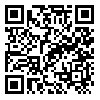Volume 24, Issue 113 (6-2014)
J Mazandaran Univ Med Sci 2014, 24(113): 130-138 |
Back to browse issues page
Download citation:
BibTeX | RIS | EndNote | Medlars | ProCite | Reference Manager | RefWorks
Send citation to:



BibTeX | RIS | EndNote | Medlars | ProCite | Reference Manager | RefWorks
Send citation to:
Rezaei F, Shokrzadeh M, Majd A, Nezhadsattari T. Cytotoxic Effect of Hydroalcoholic Extract of Cornus mas L.fruit on MCF7, HepG2 and CHO cell line by MTTAssay. J Mazandaran Univ Med Sci 2014; 24 (113) :130-138
URL: http://jmums.mazums.ac.ir/article-1-3818-en.html
URL: http://jmums.mazums.ac.ir/article-1-3818-en.html
Abstract: (11962 Views)
Background and purpose: Today cancer is considered as one of the leading causes of death worldwide. An impressive number of modern drugs used in cancer treatment are isolated or derived from natural sources based on their use in traditional medicine. Cornus mas L. (Cornaceae) has medicinal applications in treating a wide range of diseases such as cancer. This study was designed to evaluate the Cytotoxic effect of Cornus mas L.fruit hydroalcoholic extract on normal and cancer cell lines.
Material and Methods: Rip fruit and unripe fruit extract was prepared by soxhlet extraction method. The anticancer activity of different concentrations of the extract (0, 10, 50, 100, 150, 200, 250µg/ml) in three cell lines MCF7 (breast cancer), HepG2 (liver cancer), and CHO (normal hamster ovary) were examined using MTT. Statistical analysis was performed using SPSS V.16.
Results: The findings revealed time and dose-dependent inhibition and also significant differences between the levels of IC50 of unripe and ripe fruit in all cell lines (P< 0.05). Also, the level of IC50 of unripe and ripe fruit on normal cell lines was significantly different from that of the cancer cell lines (P< 0.05). However, cytotoxicity of unripe fruit was found more than ripe fruit..
Conclusion: This study showed that hydroalcoholic extract of Cornus mas L.(unripe and ripe), have a considerable cytotoxic effect on cancer and normal cell lines and should be further investigated to find effective compounds present in the fruit extract. Hence, effective steps could be taken towards finding new drugs in treating cancer.
Type of Study: Research(Original) |
Subject:
Pharmacy
Send email to the article author
| Rights and permissions | |
 |
This work is licensed under a Creative Commons Attribution-NonCommercial 4.0 International License. |






